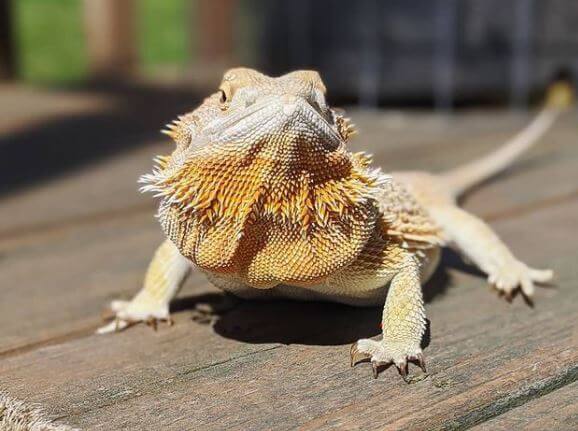For beardie lovers, you might be no strange to caring for them in a safe enclosure at home. But can a bearded dragon survive outside?
Bearded dragons originate in the deserts of Australia, so they can live outdoors as long as there is suitable light and temperatures.
However, it is important to note that there are various dangerous external factors that can threaten your pet, like predators, so you should think before you bring them outside.
In this article, we will answer the question, “Can a bearded dragon survive outside?” We will also share some detailed guidelines and informative tips below.
Let’s get started!
Related Posts:
- Can You Transport a Beardie? A Step-by-step Guide
- How to Tell If Your Beardie Likes Music?
- Can You Use a Fish Aquarium for a Beardie?
- Why Is a Beardie Trying to Escape His Cage?
- Bearded Dragon Teeth Care? What Do You Know About It?
- 8+ Bearded Dragon Dying Signs You Need to Know
- Do Bearded Dragons Have a Third Eye? A Complete Explanation
Can a Bearded Dragon Survive Outside?
So, can a bearded dragon survive outside?
Bearded dragons can survive outside if the weather is sunny and warm enough. The temperature should be at around 70 to 80°F with a low humidity level.
These reptiles need hot temperatures and low humidity to keep their body warm.
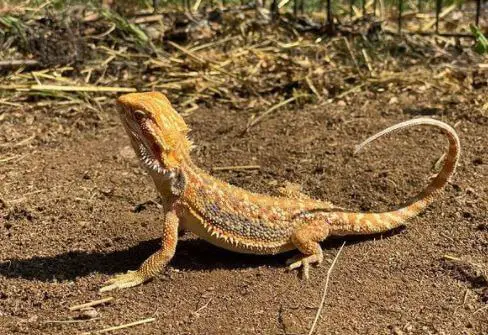
What Does a Bearded Dragon Need to Survive?
It is necessary to understand its natural habitat in the wild before you can determine the ideal conditions needed for them to live out of the tank.
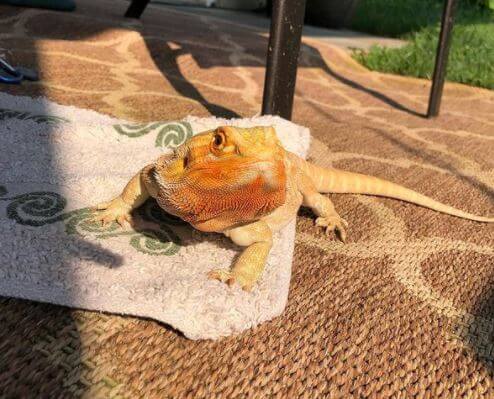
1. Natural Habitat
Bearded dragons’ temperatures will vary according to the conditions outdoors because they are cold-blooded.
They love living in warm conditions and soaking in the sun to raise their body temperatures. You can find them in arid and warm areas, such as deserts, woodlands, and so forth.

Warm weather, low humidity, and plenty of light are needed for your beardie to live well. Here are the things you should keep in mind:
- 75 to 88°F in the daytime and 70 to 75°F at night would be proper for bearded dragons.
- 20-40% is the ideal humidity level for this species. Above this level can cause respiratory infections and other related illnesses.
- Sunlight is beneficial for beardies because it emits natural UVB light that helps them produce vitamin D, which is good for their bones.
2. Mannered Habitat

Pet owners frequently mimic bearded dragons’ natural habitat to provide them with proper indoor enclosure.
Setting up its habitat needs additional factors, such as decoration, unnatural lighting, and more.
Is It Good to Take a Bearded Dragon Outside?
It is advisable to take bearded dragons out from time to time as there are lots of benefits to doing it.
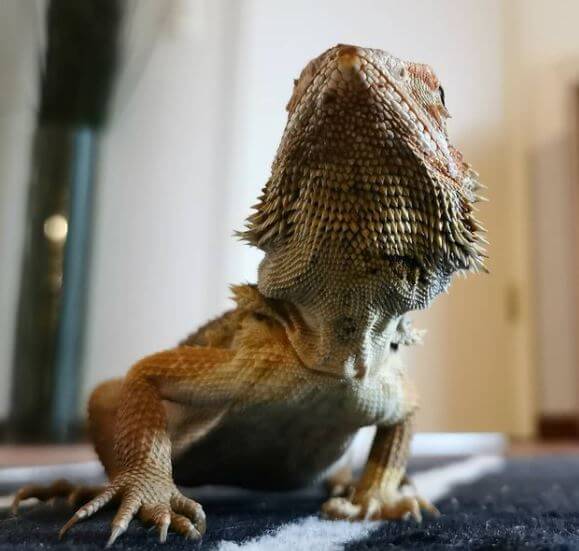
1. Natural UVB Light Benefits
UVB light in the tank cannot replace natural sunlight. Bearded dragons can produce vitamin D by soaking in the sun. That is good for their bones and health.
Moreover, using the UVB light source improperly may also cause your beardie some bone diseases. If you don’t know how to operate a UVB light, you may want to expose them to the sun more often.
2. Mental Improvement
Bearded dragons are likely to get bored with a recurring daily routine in the cage. Taking them out for a while will allow them to be more active and do activities that they can’t do indoors.
For instance, they can run on the grass, hide in the bushes or rocks, and so forth. All these factors will improve your pet’s well-being and mood.
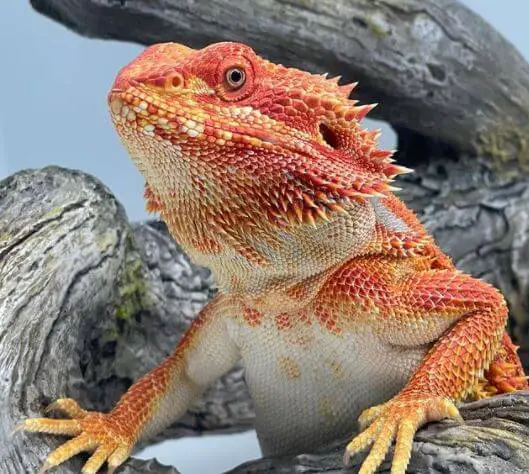
3. Physical Stimulation
Several minutes outdoors may boost the beardie’s mobility, which contributes to its health. In the wild, the beardie will move a lot to hunt or protect its region.
Living in a limited indoor enclosure restricts them from doing many things.
4. Building a Solid Bond
You will be able to connect with your bearded dragon if you play and spend time with them outdoors, especially if you do it often and in a way that doesn’t provoke them.
Over time, they will be able to familiarize themselves with your fragrance and that will make them feel comfortable around you.
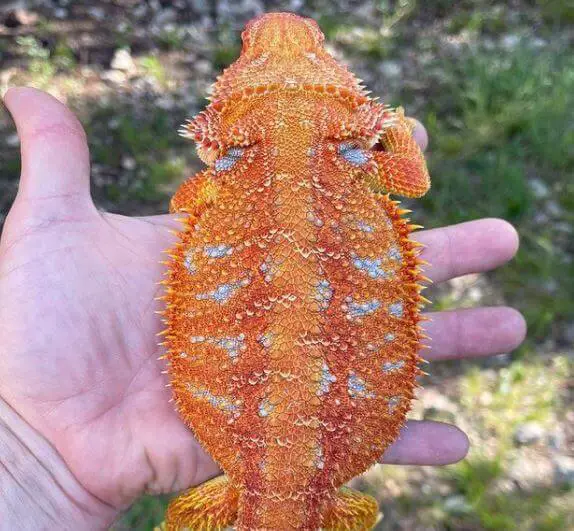
6 Useful Tips If You Want to Take a Bearded Dragon Outside
Can a bearded dragon survive outside? Yes, but you should consider some crucial points to ensure your pet is safe.
1. Check the Personality
Some bearded dragons want to be held, but some don’t. Those that don’t want to be held may freak out or get stressed the first time they go outdoors.
You should let your pet adapt to the new condition slowly.
First, take your beardie near the door to observe the outside world. Once the signs of aggression or stress disappear, you can then take your beardie anywhere outside.
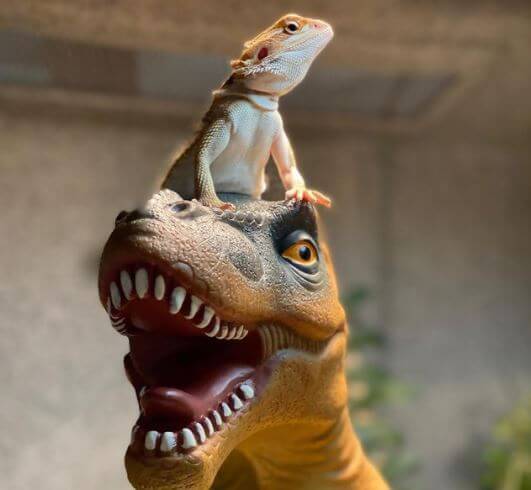
2. Choose the Appropriate Climate
Bearded dragons need a heat source to regulate their temperature and digestive system. Without heat, they might get a lung infection and other related illnesses.
You should look check the weather outside before you bring them there. A warm temperature of 75 to 88°F with lots of sunlight is ideal for bearded dragons.
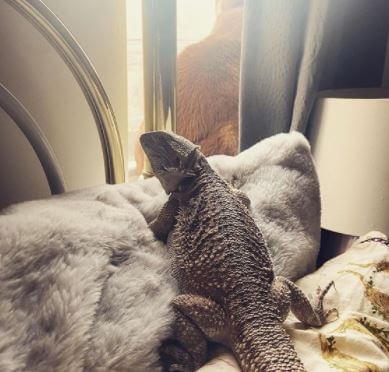
3. Watch Out for Predators
While basking in the sun, your bearded dragon gets exposed to predators such as birds, cats, or dogs. That said, you should not leave your beardie alone.
You can also make use of an outdoor enclosure for better protection.
4. Check What They Eat
Some kinds of insects or plants contain poison or carry parasites, which may cause sickness to your bearded dragon. You should keep an eye on anything that your beardie eats.
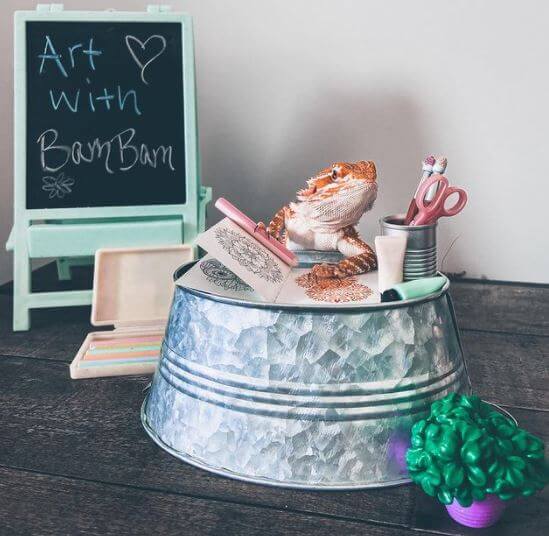
5. Use a Harness or Leash
When you take your bearded dragon outside, you may worry that you lose control of them or they get lost in the wild. In this case, a harness or leash will come in handy.
You can use the harness to keep them close to you or to calm them down if ever they freak out. Make sure to use a suitable harness so it doesn’t hurt your beardie.
If you are looking for the best harness, then some helpful options below will be what you need:
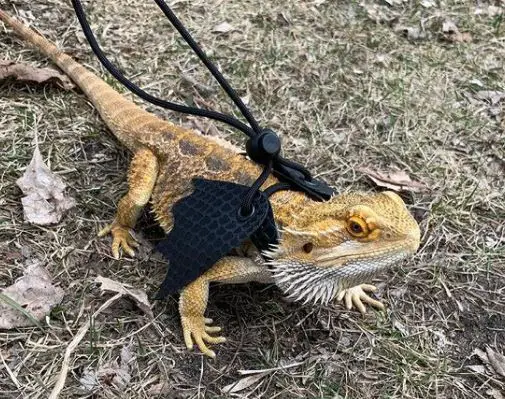
6. Have a Lot of Hides
In the wild, the beardie loves climbing on small trees and hiding in the bushes or rocks. Hence, the new environment outside with some hides might suit your pet.
Also, the bearded lizard is so sensitive to lots of things due to its third eye. Thus, it can likely get stressed while outside, even if it looks previously so relaxed and calm.
If so, opting for an outdoor area with many hides would be fine for your pet to feel safe and secure.
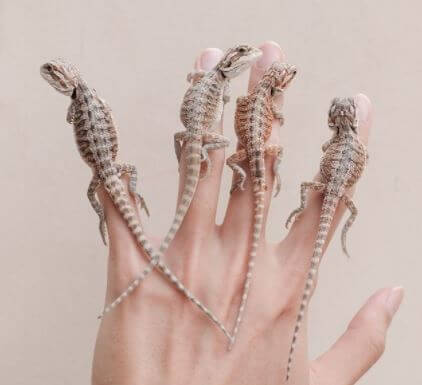
As a bonus, don’t forget to check out this video:
Frequently Asked Questions About Bearded Dragons
If you have concerns about your bearded dragon, the questions and answers below may ease your mind.
1. How Long Should a Bearded Dragon Be Outside?
It can stay outside for 25 to 30 minutes in a warm climate.
5 to 10 minutes a day within a week would be great for your bearded dragon, too, for the first time. Then you can slowly increase the needed time if you don’t see any adverse symptoms from your beardie like stress, black beard, and so on.
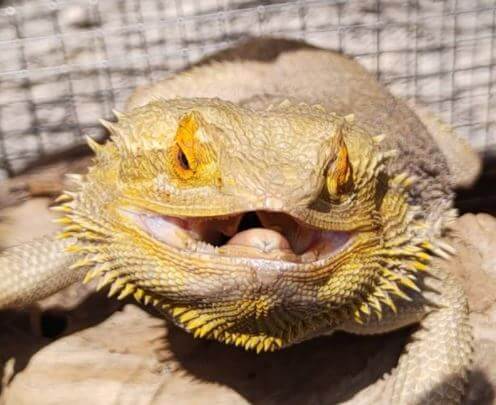
2. How Do I Know If My Bearded Dragon Is Cold?
As you know, bearded dragons need heat to stay healthy. Touching your pet is one of the simple ways to check whether your beardie is cold or not.
Furthermore, the beardie may have some side effects if it is cold, such as abnormal performance or inability to digest food.
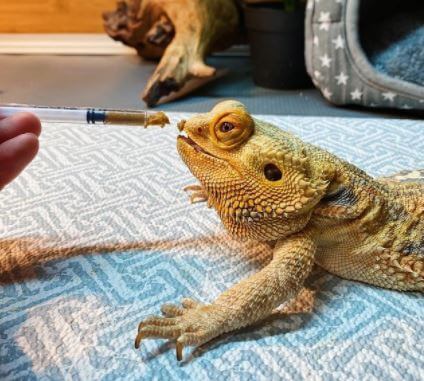
3. Will a Bearded Dragon Die Without the Heat Lamp?
Yes and no. Bearded dragons need a heat lamp to maintain their temperature as well as their digestive system.
They can only live without a heat lamp for 24 hours unless the temperature is at least 70 degrees Fahrenheit.
After this period, they will find it hard to survive because of a lack of a heating source.
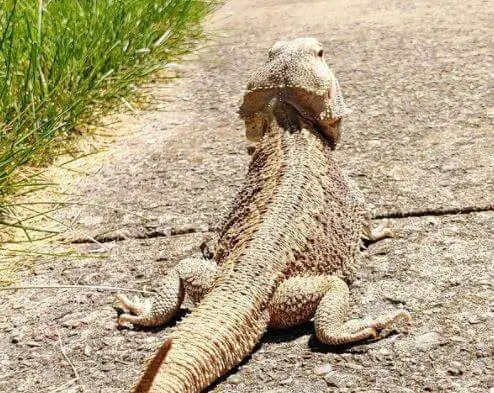
4. Can a Bearded Dragon Survive Without UVB?
The beardie can live within 2 days in case of lacking UVB. UVB light is essential for it to grasp and produce vitamin D for its strong bones.
Thus, without UVB light, bone diseases can happen to them. Their bones will become weaker and it will likely lead to death in the worst scenario.

Conclusion
Can a bearded dragon survive outside? Yes, if it is a warm habitat with enough UVB lights and a safe outdoor enclosure.
The beardies live in warm areas. These regions provide ideal conditions for them to raise and maintain their body temperature.
Key points for whether bearded dragons can survive outside:
While bearded dragons are desert-dwelling reptiles, their survival outdoors can be challenging due to various factors. Here’s a guide with key points to help you understand the limitations of keeping bearded dragons outside:
1. Native Habitat:
- Desert Dwellers: Bearded dragons are native to arid and semi-arid regions of Australia, where they’ve adapted to harsh desert conditions.
2. Temperature Considerations:
- Cold Sensitivity: Bearded dragons are ectothermic, relying on external temperatures to regulate their body heat. They cannot tolerate cold temperatures.
- Nighttime Dips: Outdoor temperatures can drop significantly at night, which can be harmful to bearded dragons, potentially leading to illness or death.
3. Seasonal Variation:
- Winter Hibernation: In their native habitat, bearded dragons experience seasonal temperature fluctuations but may go into a state resembling hibernation during the colder months. This is not advisable for pet bearded dragons.
4. Predators:
- Natural Predators: In the wild, bearded dragons face predation from birds, snakes, and larger reptiles. In an outdoor environment, they might become targets for local wildlife or domestic pets.
5. Disease Risk:
- Wildlife Interaction: Exposure to wild reptiles or other animals can increase the risk of disease transmission to your pet bearded dragon.
6. Inadequate UVB Exposure:
- Natural Sunlight: While outdoor access provides natural sunlight, it can be challenging to ensure your bearded dragon receives the right amount of UVB exposure for their health, as you may not control the duration or intensity.
7. Escape Risk:
- Potential Escape: Bearded dragons are agile climbers, and they might find a way to escape from an outdoor enclosure or become lost.
8. Enclosure Needs:
- Safe Enclosure: If you do choose to allow your bearded dragon outdoors, they should be in a secure enclosure to prevent escapes and protect them from predators.
9. Supervised Outdoor Time:
- Limited Exposure: If you want your bearded dragon to enjoy some outdoor time, do so under strict supervision, using a leash or harness for their safety.
10. Climate Considerations:
- Local Climate: Whether you live in a region with extreme temperatures or frequent rain, it’s essential to consider your local climate’s suitability for outdoor bearded dragon activities.
11. Hydration and Food:
- Offering Water: Ensure access to clean water and a shallow container for soaking to maintain hydration levels, especially during outdoor activities.
- Limited Food: Bearded dragons may find wild insects, but their diet should not primarily rely on outdoor foraging.
12. Health and Wellness:
- Regular Vet Checkups: Outdoor activities should not replace proper care and regular veterinary checkups indoors.
While bearded dragons can thrive in the right indoor environment, their survival outdoors is fraught with challenges and risks. Bearded dragons are better suited for controlled indoor enclosures where you can maintain stable temperatures, provide appropriate UVB lighting, and offer a safe and disease-free environment. If you wish to allow your bearded dragon outdoor time, do so with strict supervision in a secure enclosure to ensure their safety and well-being.
Further Reading:
- Carolina Custom Cages Terrarium Review
- 8 Best Basking Rock for Beardie: What Is the Best Choice?
- 10 Best Thermometers for Beardie: How to Choose the Best One?
- 5 Best Beardie Lighting Setups for Beardie Lovers
- 9 Best Heat Lamps for Beardie: Natural Habitat Provided

